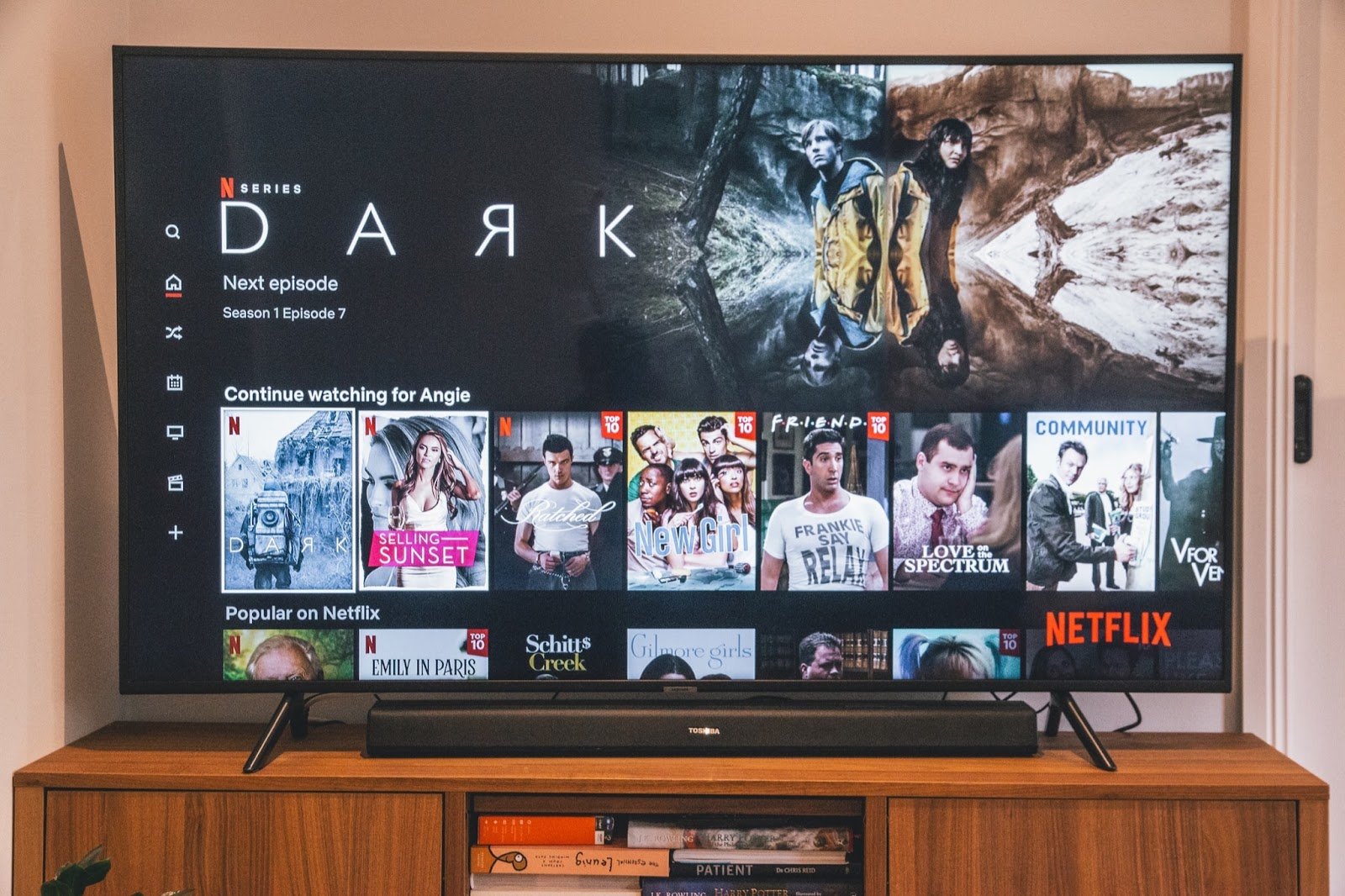Understanding the difference between OTT vs CTV is crucial for businesses and consumers alike.
Connected TVs and OTT platforms both display video ads, but function quite differently
When it comes to streaming content, terms like CTV (Connected TV) and OTT (Over-the-Top) are often used interchangeably. Each term references the delivery of video content over the Internet, but there are key differences between the two. Understanding the difference between OTT vs CTV is important for businesses and consumers alike, as they can impact the way content is accessed and consumed.
Dig deeper with The Marketer's Guide to Understanding OTT (Over the Top) Platforms.
What Is OTT?
Over-the-top refers to video content streaming over the internet directly to viewers, bypassing traditional cable, satellite, and broadcast television platforms. Popular OTT services include Hulu, Prime Video, Netflix, and Disney+. These platforms offer a wide range of on-demand content, including TV shows, movies, and original programming.
OTT advertising has many significant benefits. Brands have several tools to ensure their ads are displayed in a safe and controlled environment, reaching engaged viewers who are actively consuming content. Additionally, OTT advertising is highly accessible across a broad range of device types, including smart TVs, smartphones, and even gaming consoles.
OTT has become an increasingly popular choice for advertisers looking to reach their target audiences with highly targeted and measurable campaigns. As more consumers turn to OTT platforms for their entertainment needs, the potential reach and effectiveness of OTT advertising continue to grow. Overall, OTT offers a new and effective way for brands to connect with their audiences in the digital age.
What Is CTV?
Connected TVs are television sets that display video content from the internet, usually through a connected or embedded online device. The key difference between CTV and OTT is that CTV specifically refers to streaming on television screens, whereas OTT represents any screen connected to the internet.
CTV has significantly impacted traditional cable companies since more viewers are opting for streaming services over traditional cable packages. However, this shift has created opportunities for CTV advertising companies, as they can target specific audiences and personalize ads based on viewer data. Popular examples of CTV devices include Apple TV, Roku, Amazon Fire TV, and Google Chromecast, all of which enable on-demand viewing of streaming services such as Netflix, Hulu, and Disney+.
History of OTT and CTV
Over-the-top (OTT) streaming can be traced back to the early 2000s when companies like Netflix and Hulu pioneered the concept of delivering video content over the Internet, bypassing traditional cable and satellite providers. This marked a significant shift in how consumers accessed and consumed their favorite movies and TV shows, leading to the rapid expansion of the OTT market. As technology advanced and internet bandwidth improved, OTT platforms continued to grow in popularity, offering a wide range of content choices and personalized viewing experiences.
Connected TV (CTV) dates back to the early 2010s when smart TVs and internet-connected devices started to gain traction in the market. This allowed viewers to access OTT content directly on their television screens, blurring the lines between traditional TV and streaming services. As the popularity of CTV continued to rise, advertisers and content providers began to recognize the potential of reaching audiences through this new medium, leading to the development of targeted advertising and innovative CTV platforms. The history of CTV reflects the ongoing convergence of television and digital media, shaping the future of how we consume and engage with content on the big screen.
Benefits of OTT vs CTV Advertising
CTV and OTT advertising offer numerous benefits. Marketers can reach a wide audience, particularly cord-cutters, who consume most of their entertainment through streaming services. This provides an opportunity to engage with a growing audience that is difficult to reach via traditional TV advertising.
Additionally, CTV and OTT advertising allow for highly targeted advertising, enabling marketers to reach the right audience at the right moments based on their demographics, interests, and behaviors. This targeting capability ensures that ads are shown to the most relevant viewers, increasing the overall effectiveness of the campaign.
CTV and OTT offer robust retargeting capabilities, allowing marketers to re-engage with viewers who have previously interacted with their ads. This helps to reinforce the brand message and increase conversion rates. Advertising via these channels also provides advanced measurement and analytics, allowing marketers to track and analyze campaign performance in real-time. This valuable data helps optimize campaigns for better results and ROI.
Challenges of OTT vs CTV Advertising
CTV and OTT ads do face their share of challenges. Many OTT services provide options to skip advertisements, making it harder for brands to get their message across. Additionally, the fragmented landscape of CTV and OTT means that advertisers need to navigate various platforms and devices to reach their audience, leading to a lack of consistency in advertising strategies.
To overcome these challenges, advertisers need to create compelling and relevant ads that capture the attention of viewers and make them want to engage with the content. Coordination and integration across platforms is also crucial, ensuring that the advertising experience is seamless and cohesive. Additionally, paying attention to ad frequency and relevance is essential to prevent viewers from becoming overwhelmed with ads. By addressing these challenges, advertisers can maximize the potential of CTV and OTT advertising to reach and engage with their audience effectively.
OTT or CTV: Which to Choose?
When it comes to advertising strategy, the key differences between OTT and CTV advertising lie in the campaign objectives, target audience, and budget.
For campaign objectives, OTT advertising is best suited for brand awareness and reaching a wider audience, while CTV advertising is more effective for driving engagement and conversions. In terms of target audience, OTT advertising allows for precise targeting based on demographics, interests, and behaviors, while CTV advertising focuses on reaching viewers on their connected TV devices. When it comes to budget, OTT advertising offers more flexibility and cost-effectiveness, while CTV advertising may require a higher investment due to premium placement opportunities and targeting capabilities.
Marketers should consider specific scenarios and considerations such as the type of product or service being advertised, the desired campaign metrics, and the available budget when deciding between OTT and CTV advertising. Based on these factors, a clear recommendation is to choose OTT advertising for broader brand awareness and audience reach, and CTV advertising for driving engagement and conversions with a more targeted audience. Ultimately, the decision should be based on the specific advertising goals and resources available.
Make tvScientific Your CTV Partner
tvScientific was co-founded by senior executives with deep roots in search, programmatic advertising, digital media, and ad verification. We think scientifically, and our results are driven by a belief in one, simple formula: Trust = Data x Transparency x Control.
With powerful attribution capabilities, real-time reporting, automated optimization, and built-in, always-on testing, we believe that tvScientific provides the most robust, transparent, tailored CTV advertising platform. Once you see it for yourself, we know you will too. Request a demo today.






